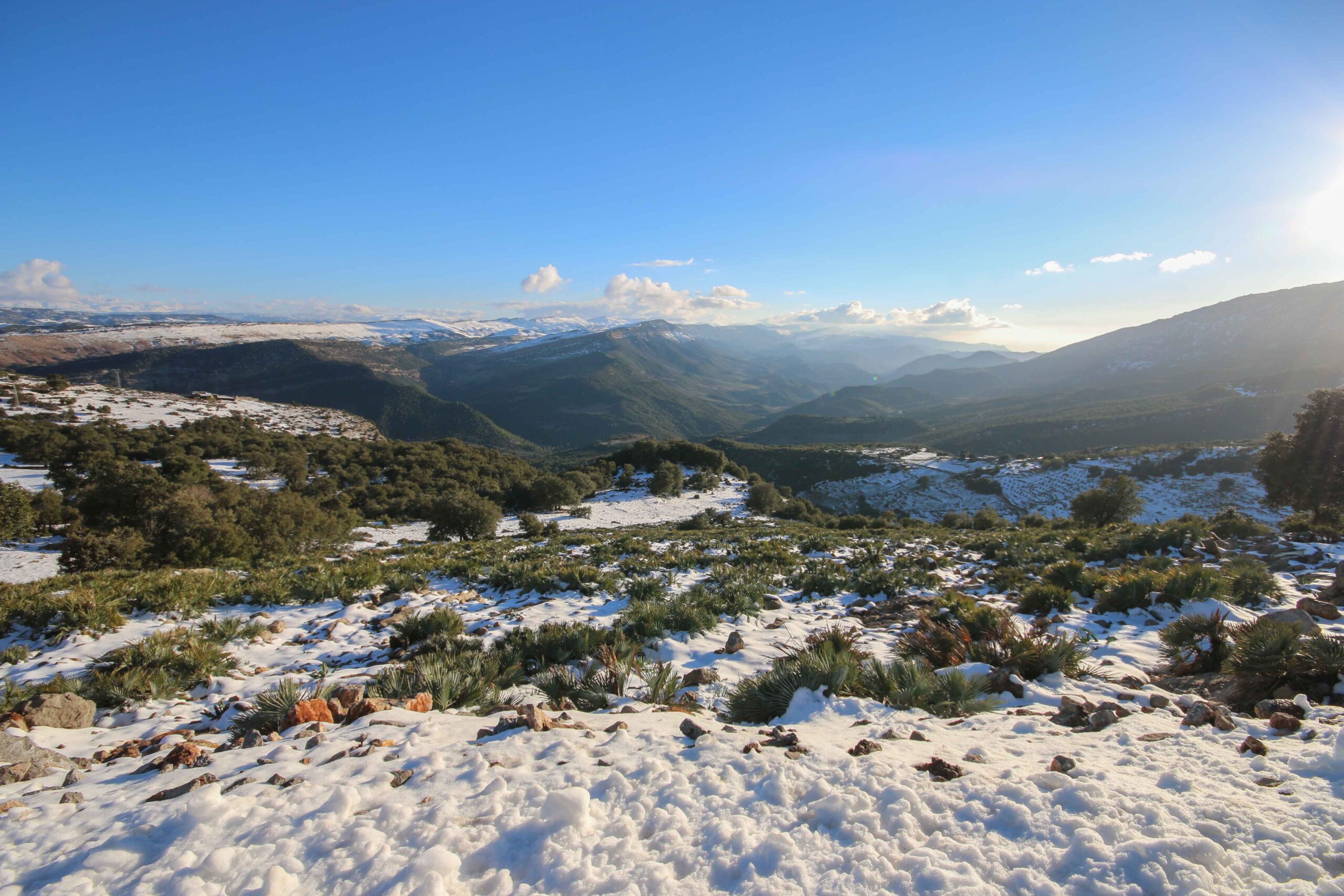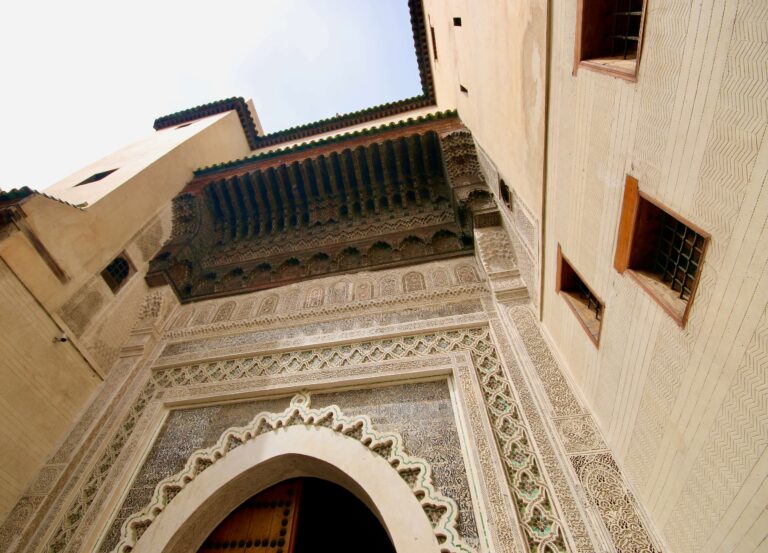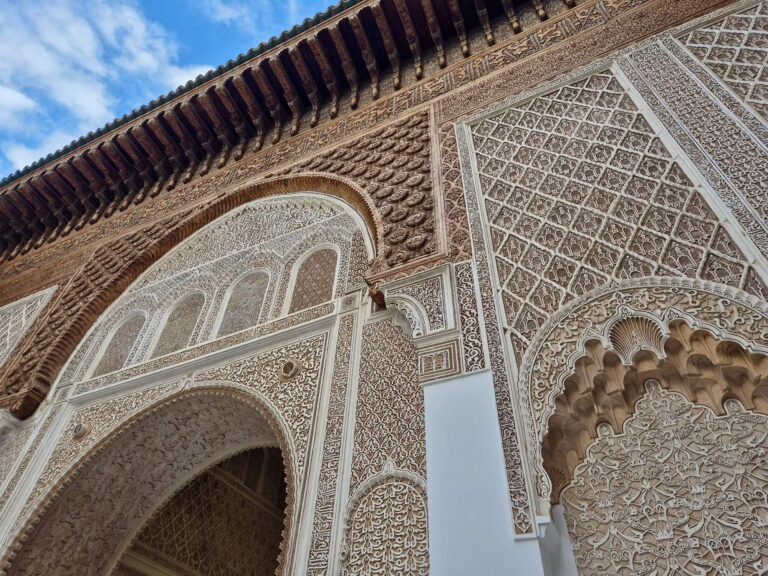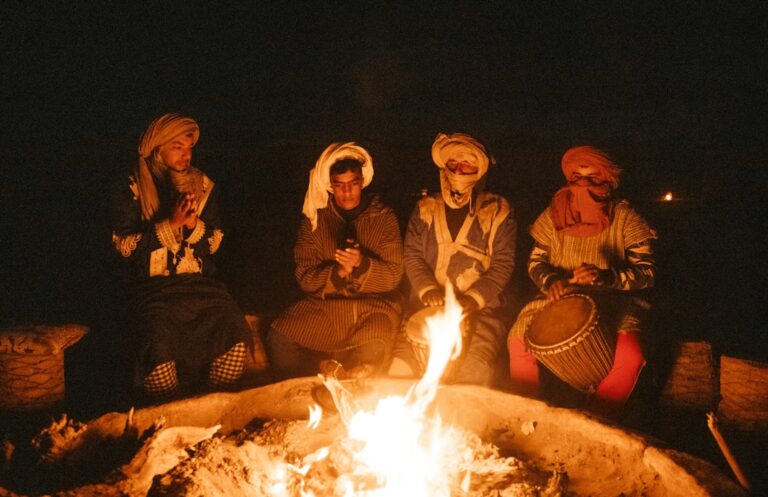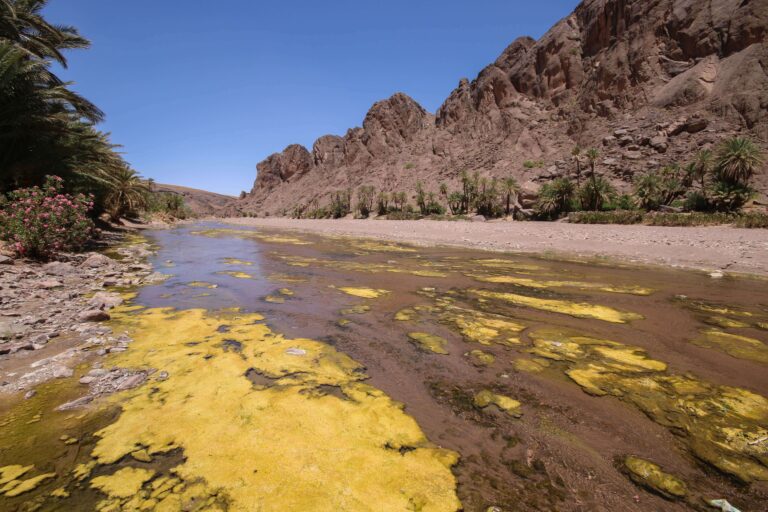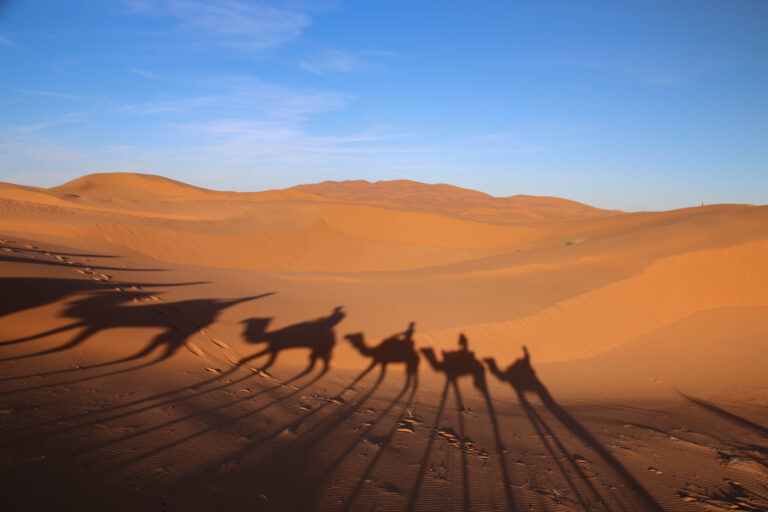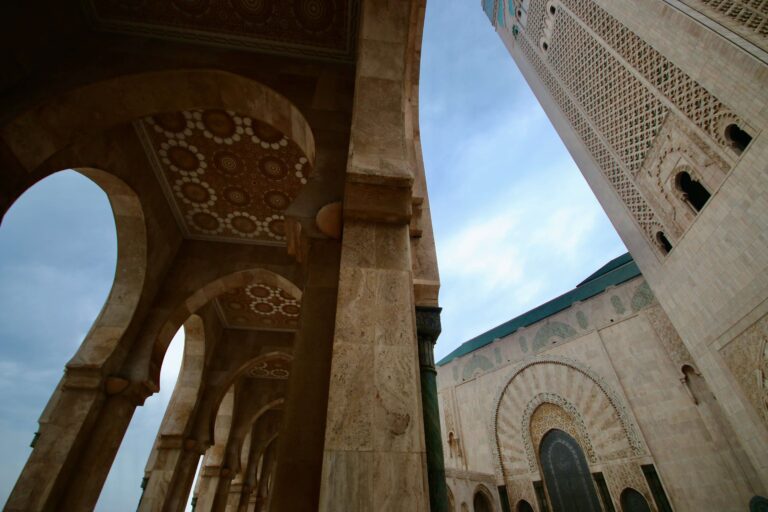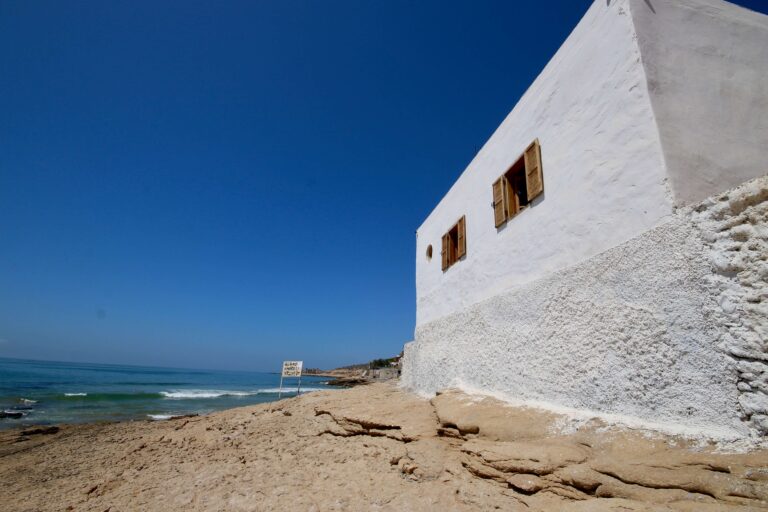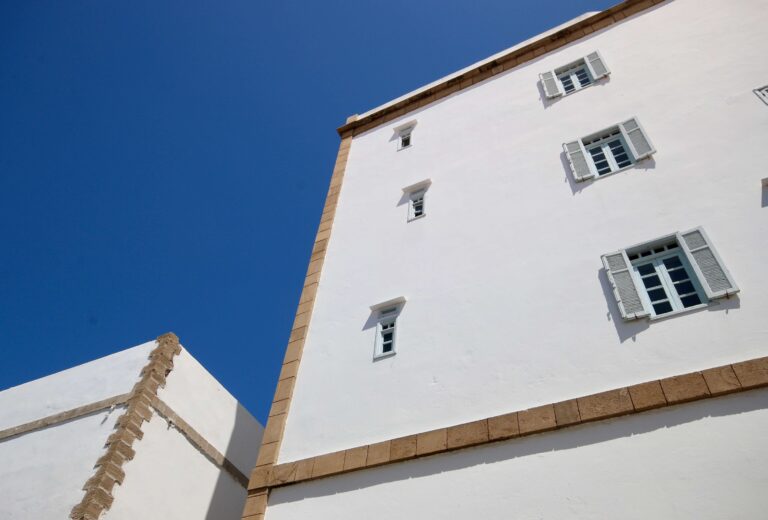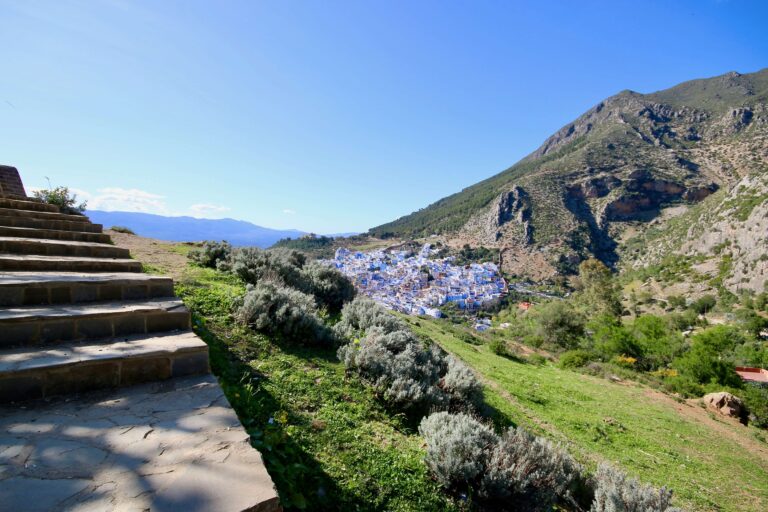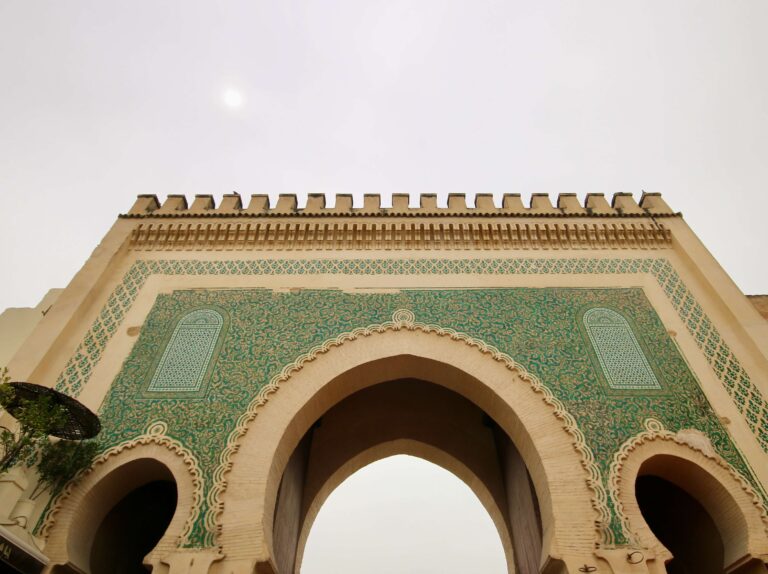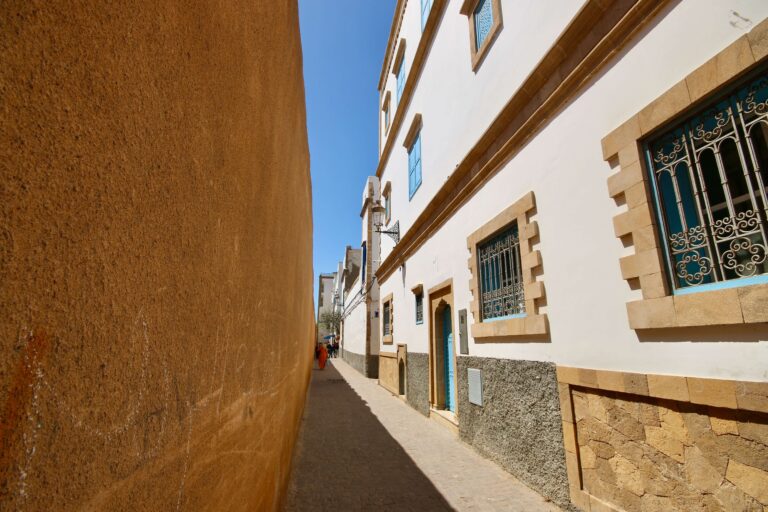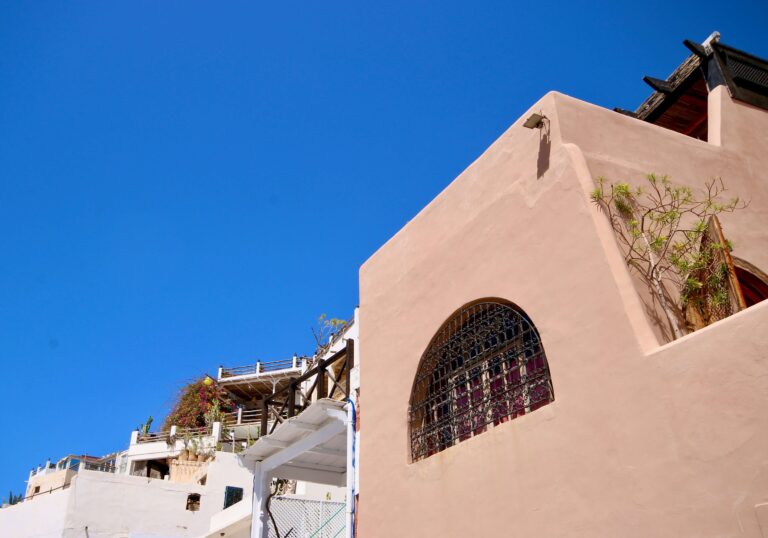Travelling to Morocco in January: Is it a Good Time to Visit?
Travelling to Morocco in January? Discover everything you need to know about visiting Morocco in the winter, from weather to crowds and where to go.
While January may be one of the coldest months in Morocco, it is a far cry from the dreary conditions experienced across much of the Northern Hemisphere. If you’re seeking respite from the harsh winter temperatures, visiting Morocco in January can provide a welcome escape.
Living on Morocco’s southern coast, I’ve always found January to be relatively mild. Even the early morning chill can’t keep me out of the water! But I understand that things get colder the further north you head. And winter snowfall in the Atlas Mountains can make some parts of the country more difficult to navigate.
The cooler temperatures that Morocco enjoys in January make it an ideal time to explore the country’s warmer regions, such as the Sahara Desert and the coastal cities of Agadir and Essaouira. For surfers, winter heralds in bigger swells (without the summer crowds).
Meanwhile, the medinas of Marrakech and Fes tend to be quieter than usual.
As January is a shoulder season in Morocco, the reduced demand can translate into good accommodation deals and easier access to transportation. It can also offer a more intimate experience, whether you’re travelling as part of a small group tour or exploring the country independently on a self-drive itinerary.
The only exception to this is the first week of January when there’s an uptick in demand during Europe’s post-Christmas winter holidays.
In my opinion, travelling to Morocco in January is perfect for those who want room to move in the medinas and greater opportunities to connect with the local culture.
In this article, I’ll explain what you can expect if you’re travelling to Morocco in January, from weather to events and the best places to visit for a winter escape.
If you’re focusing your travels on Marrakech, Fes, Agadir or Essaouira, click on the links to find detailed information about visiting each in January.
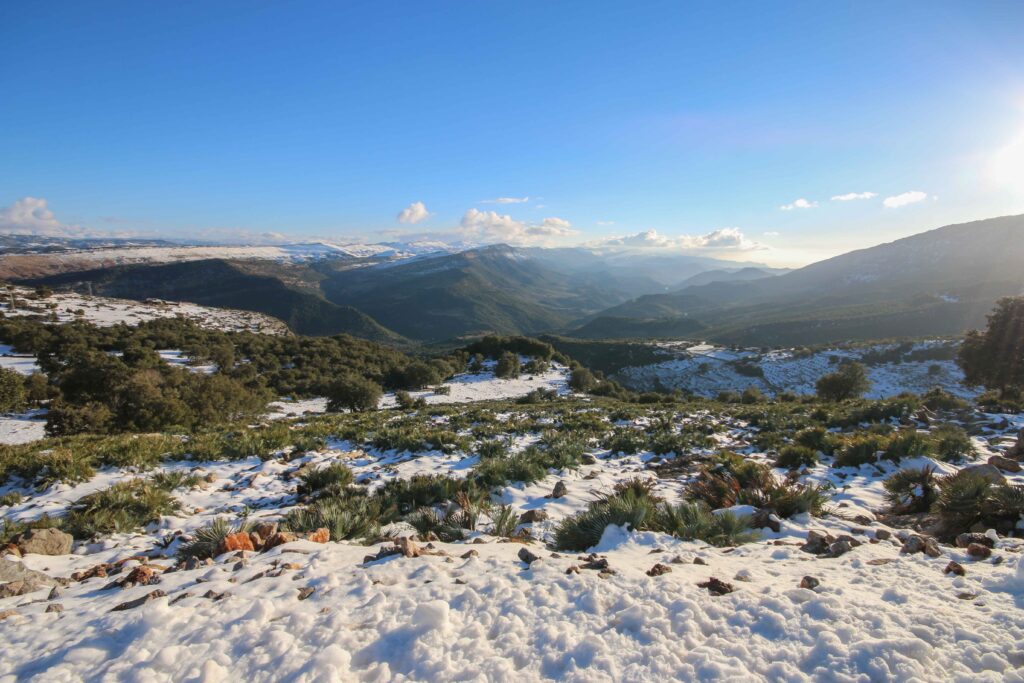
Disclosure: This article contains affiliate links, meaning I earn a small commission when you make a purchase. Affiliate links cost you nothing and ensure my content stays free!
Weather in Morocco in January
While Morocco is known for its warm, sunny climate, the winter months do bring a noticeable chill to the air. This is particularly true in the north of the country.
January is the coldest and wettest time of year across much of the country. Although it’s still mild compared to most European destinations.
Daytime highs in January typically reach into the high teens Celsius (mid-to-high 60s Fahrenheit). This makes it an ideal time for city-based sightseeing in Marrakech. Winter is one of my favourite times to be in the “Red City”. The snow-capped Atlas Mountains provide a spectacular backdrop!
If you’re travelling to Morocco’s northern cities like Fes or Chefchaouen, be sure to bring a warm jacket and waterproof if you’re visiting in January.
Top tip:
If you’re travelling to northern Morocco in January, I’d highly recommend finding a riad with a fireplace. That way, you have some where toasty to thaw out and warm up when you return from sightseeing.

The Mediterranean and Atlantic influences help keep things relatively temperate along the coastline. The weather in January at Morocco’s beachside resorts is enticingly mild. I’m someone who will surf and swim right through winter in southern Morocco. Although I know that won’t appeal to everyone!
While you could be sunbathing in Agadir during a January holiday in Morocco, the mercury can plummet much lower in the Atlas Mountains. Here, it sometimes dips below freezing. Even in the Anti Atlas Mountains, we’ve experienced heavy snowfall while driving around in January. It was incredibly beautiful!
In the Sahara Desert, January temperatures can sometimes reach into the mid-20s Celsius (around 80°F). You can expect bright, sunny skies and cloud-free conditions that are perfect for stargazing at night.
That being said, nighttime winter temperatures can be very chilly in the desert. Bring plenty of warm layers (beanies and gloves aren’t overkill!)
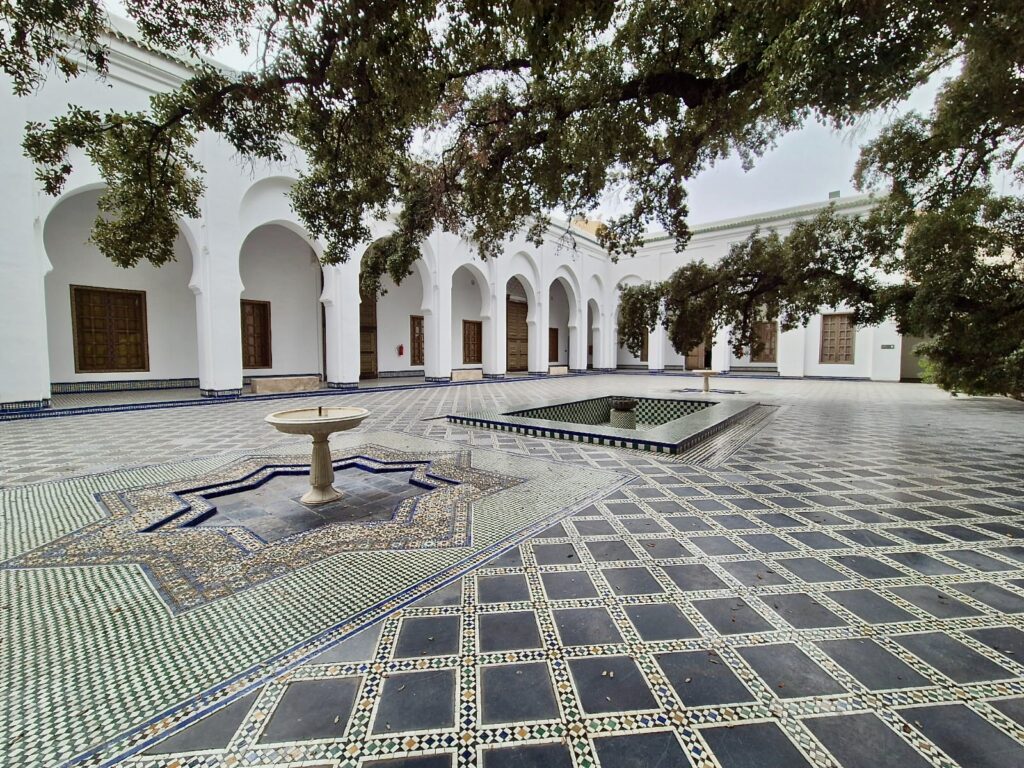
Is January a popular time to visit Morocco?
Visiting Morocco in January is perfect if you’re looking to take advantage of lower accommodation prices in popular destinations like Marrakech and Fes. During this shoulder season, Morocco’s major tourist attractions see fewer visitors, allowing you to explore iconic attractions with more breathing room.
The only exception to this is the very start of January when Europeans are visiting on their Christmas/New Year break.
For photographers, you won’t have to compete for the best vantage points at popular landmarks. Plus, the lack of desert dust makes it ideal for capturing clear, crisp images in the Sahara Desert.
By travelling to Morocco in January, you’ll be able to immerse yourself in the country’s captivating culture and stunning scenery without the chaos of peak season. Additionally, you’ll find that many accommodations offer discounted rates.
Whether you want to stay in a luxury riad in Fes or a spa hotel in Essaouira, January is one of the cheapest months to visit Morocco.
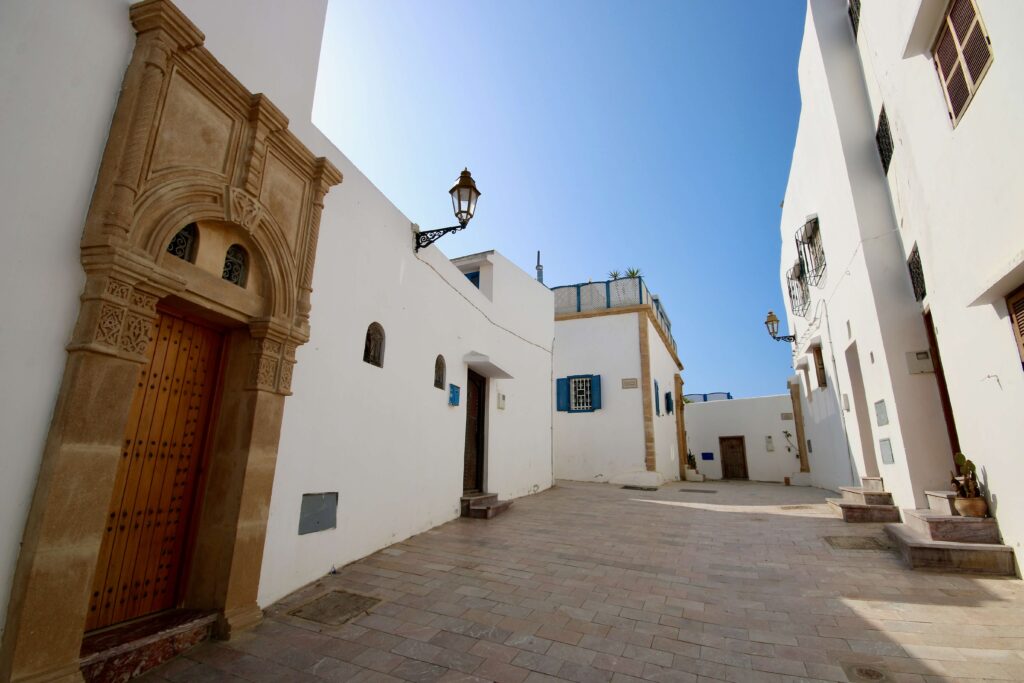
Festivals and events in Morocco in January
Proclamation of Independence – January 11
On January 11, 1944, the Istiqlal Party presented a document demanding Morocco’s independence from French colonial rule. This marked a pivotal moment in the country’s histor. It set in motion a decades-long struggle that would eventually lead to the North African nation’s liberation.
Each year, Moroccans come together to commemorate their hard-won freedom, with patriotic celebrations in cities and towns nationwide. Expect to see a lot of flags and other festive decorations in what is an energised display of national pride.
Yennayer: Amazigh New Year – January 12 and 13
Yennayer is observed by Amazigh people across Morocco to mark the start of the agricultural calendar. While you’ll find festivities honouring this cultural holiday in cities like Agadir, the most traditional Yennayer celebrations take place in the Middle and High Atlas mountain regions.
As my husband’s family is Amazigh, this is a day that we celebrate with lots of really good food. It’s a fantastic excuse to gather with family and friends, enjoy a day off work and honour Morocco’s Indigenous peoples.
If you’re the type of traveller who readily connects with locals, there’s a good chance you’ll get invited to share in the feast!
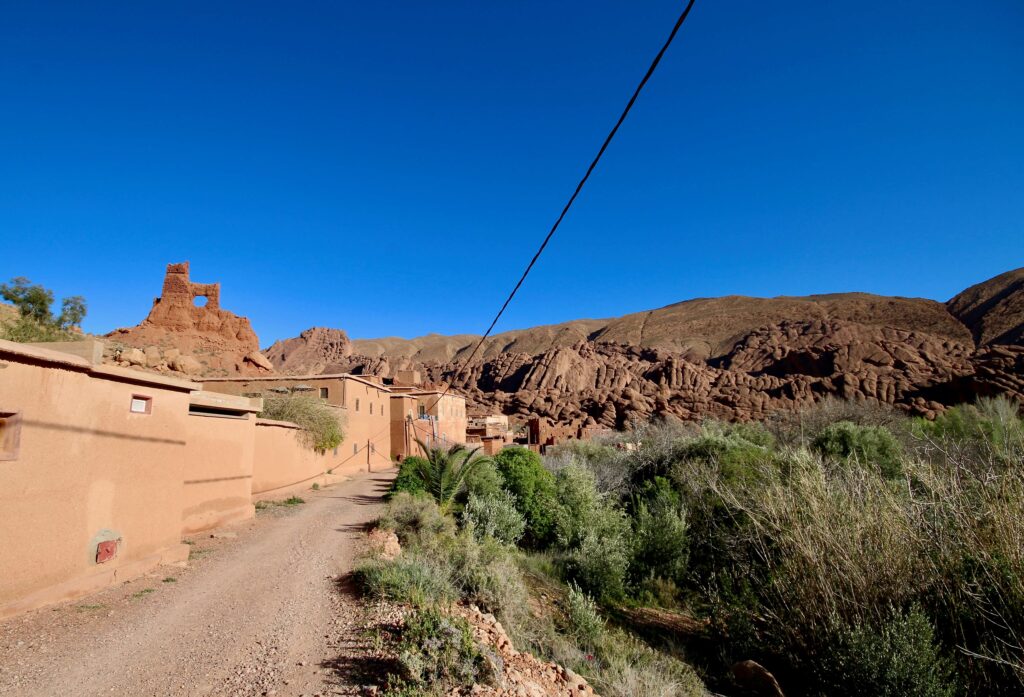
Where to go in Morocco in January
With the country experiencing cooler temperatures across the board, there are a wealth of experiences on offer if you’re travelling to Morocco in January. Some cities like Marrakech and Tangier may see a bit more rainfall than usual. But the lack of crowds makes it an ideal time for sightseeing in the medinas.
For warmer conditions, head to the seaside city of Essaouira or the beach resort of Agadir. Both experience mild temperatures in January.
With the Atlantic swells at their peak, this is also one of the best times to hit the surf breaks of Taghazout and Imsouane. You’ll need a wetsuit though!
Destinations like Ouarzazate, Dades and Todra Gorges are particularly pleasant in January. You can expect relatively dry weather and an absence of dust at this time of year.
While the Sahara Desert sees idyllic daytime temperatures, the nighttime lows can be incredibly chilly. Make sure you stay at a desert camp with a campfire!
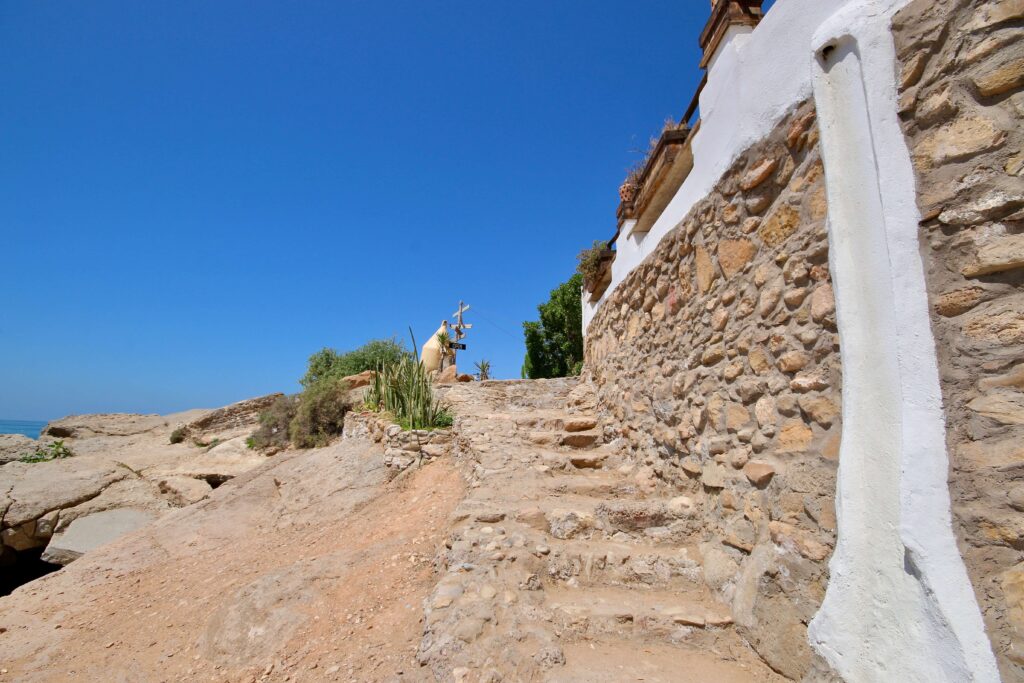
Local insight:
It’s worth noting that the further south you travel in Morocco, the milder the temperatures will be in January. For example, Chefchaouen in the north will be “jacket weather”. Meanwhile, you might be in a T-shirt on the beaches of Mirleft and Sidi Ifni in the south.
So if you’re looking to minimise the need for heavy winter clothing during your January holiday in Morocco, I’d recommend focusing your explorations on the southern reaches of the kingdom. Check out my suggested itinerary here!
For those who want to ski in the High Atlas or Middle Atlas mountains, January offers some of the best conditions at the ski resorts of Oukaïmeden and Michlifen. That being said, you won’t find the facilities of big-name European ski resorts. Set your expectations accordingly and you’ll enjoy a distinctly Moroccan experience.
And with the chilly outside temperatures, January is one of the best months to warm up in a Moroccan hammam! If you’re not sure what to expect, I’ve created a detailed guide with everything you need to know about Moroccan hammam culture.

PLAN YOUR TRIP WITH MY FAVOURITE RESOURCES:
Find hotels via Booking
Book tours and attractions via Viator or GetYourGuide
Find a rental car via Discover Cars
Book flights via Kiwi or Booking
Search for buses and trains via 12Go or Omio
Get travel insurance via SafetyWing
Buy a digital eSIM with Airalo
By purchasing through my links, you’ll be supporting my website at no additional cost to you
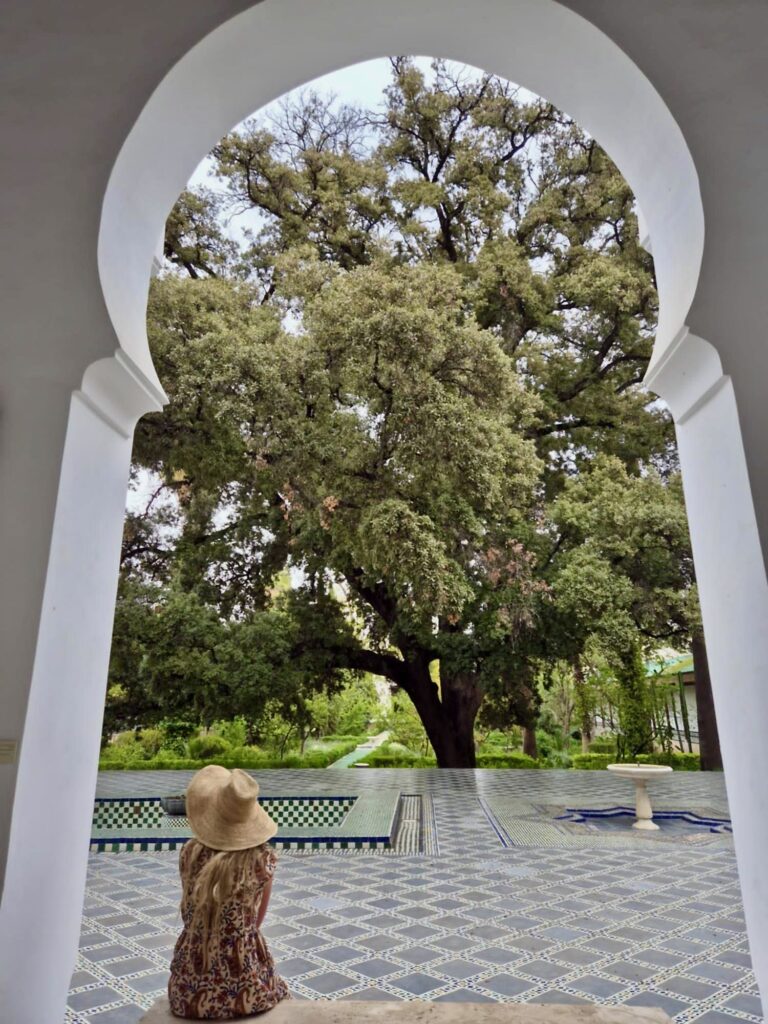
About Me
I’m Malika, a global traveller who first visited Morocco in 2014 before marrying a local and settling down in a little village on the Atlantic coast. Over the years, I’ve developed an intense love for Morocco, its incredible landscapes, storied cities and the exceptionally generous hospitality of its people.
Malika in Morocco is a place to share my years of experience exploring the country, from north to south and from the Atlantic Ocean to the Sahara Desert. As a resource for travellers visiting Morocco, I want to encourage others to experience this captivating destination the way they desire, whether that’s independently or under the expert guidance of local tour operators.
I believe strongly in supporting responsible and sustainable tourism initiatives while inspiring travel experiences that are life-impacting and mutually beneficial for both travellers and locals.
-
Moroccan Architecture: Riads + Kasbahs + Madrasas + Babs
Morocco’s architectural heritage reflects the country’s diverse geography and rich history, woven together through successive waves of settlement and military conquest. It’s a testament to its many cultural influences, from the ancient Roman ruins of Volubilis to the historic ksars along the Saharan trade routes and the madrasas of the Saadian and Marinid dynasties. If…
-
10 Beautiful Buildings in Morocco to Add to Your Itinerary
Morocco is renowned for its architectural treasures, with strikingly beautiful buildings and monuments scattered throughout the country. From the opulently decorated mosques and madrasas of the imperial cities to the earthen-walled kasbahs and ksours of the south, the country’s diverse architectural traditions reflect its cultural, geographical and religious heritage. If you’re a fan of architecture…
-
Meet the indigenous Amazigh people of Morocco
Often referred to as “Berbers”, the Amazigh people of Morocco are a diverse collection of ethnic groups Indigenous to North Africa. While they are concentrated primarily in the Maghreb region (Algeria, Libya, Mauritania, Tunisia and Morocco), they can also be found in northern Mali and northern Niger. Predating the arrival of Arabs in the region,…
-
Should I Get Travel Insurance For Morocco? Everything to Know
Whether you’re travelling to Morocco on a one-off trip or living a semi-nomadic lifestyle in the country, travel insurance should be a top priority before you head off. I’m someone who never travels abroad without travel insurance. It was drummed into me by my parents when I was young that it just wasn’t worth the risk. After…
-
Visiting Morocco’s Sahara Desert: Everything You Need to Know
Planning on visiting Morocco’s Sahara Desert? Discover everything you need to know to plan an incredible visit, from the best tours and self-drive itineraries to highly-rated desert camps. One of the most transformative experiences I’ve had in Morocco was spending a night under the star-studded sky of the Sahara Desert. Not only did I feel…
-
Renting a Car in Casablanca: Everything You Need to Know
Thinking about renting a car in Casablanca? Discover everything you need to know, from road conditions to safety issues and car hire costs in Morocco. Casablanca is Morocco’s main aviation gateway and the first port of call for many international travellers. So it makes sense that it’s also one of the best places to rent a car…
